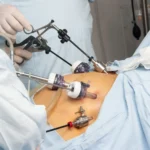Hair loss affects millions of people and can significantly impact self-image and quality of life. Hair transplant surgery offers a permanent solution to restore natural-looking hair growth. Understanding what the procedure involves and how to prepare can help you approach surgery with realistic expectations. Here is more information on hair loss, the types of hair transplant procedures available, and how you can prepare:
What Is Hair Loss?
Hair loss, medically known as alopecia, refers to the partial or complete loss of hair from areas where it typically grows. It can occur gradually or suddenly, and patterns vary based on underlying causes. Hair loss may present as a receding hairline, thinning at the crown, or diffuse thinning across the scalp. While some hair loss is temporary and reversible, other forms are permanent and require intervention, such as hair transplant surgery, to restore growth.
What Causes Hair Loss?
Multiple factors contribute to hair loss, including genetic predisposition, lifestyle, and health conditions. Androgenetic alopecia is primarily hereditary and results from hormonal changes that shrink hair follicles over time, making them unable to produce visible hair. Other causes include medical conditions such as thyroid disorders, autoimmune diseases like alopecia areata, and nutritional deficiencies. Identifying the underlying cause is a key step in determining whether surgery is an appropriate treatment option.
What Is Hair Transplant Surgery?
Hair transplant surgery is a medical procedure that relocates healthy hair follicles from one part of the scalp to areas experiencing thinning or baldness. The transplanted follicles are typically taken from the back or sides of the head, where hair is less susceptible to hormonal factors that cause hair loss. Once transplanted, these follicles continue to grow naturally in their new location.
There are two primary techniques used in hair transplant surgery: follicular unit extraction (FUE) and follicular unit transplant (FUT). FUE involves extracting individual hair follicles directly from the donor area, leaving minimal scarring and enabling faster recovery. FUT involves removing a strip of scalp tissue from the donor area, which is then dissected into individual follicular units. Both methods have distinct advantages, and the choice between them depends on factors such as the extent of hair loss, desired results, and the surgeon’s recommendation.
How Can You Prepare?
Preparation begins with a thorough consultation with a qualified surgeon. During this appointment, the surgeon will assess your hair loss pattern, evaluate the quality of your donor area, and discuss your goals and expectations. This is also an opportunity to review your medical history and any underlying health conditions that may affect the procedure.
In the weeks leading up to surgery, avoid smoking and limit alcohol consumption, as both can impair healing. Certain medications may need to be temporarily discontinued to reduce the risk of bleeding during the procedure. On the day of surgery, wear comfortable, loose-fitting clothing that does not need to be pulled over your head. Arrange for someone to drive you home afterward, as you may feel tired or experience mild discomfort.
Prepare for Your Surgery
Hair transplant surgery offers a reliable solution for permanent hair restoration when performed by a skilled surgeon. Understanding the procedure, the techniques involved, and the steps to prepare will help you approach surgery with realistic expectations. Follow your surgeon’s pre-operative instructions carefully and commit to the recommended aftercare routine to achieve your desired results. Schedule a consultation with a specialist to discuss your options and begin your journey toward restored hair growth.











